South Korea - Sophisticated Seoul - Part 1
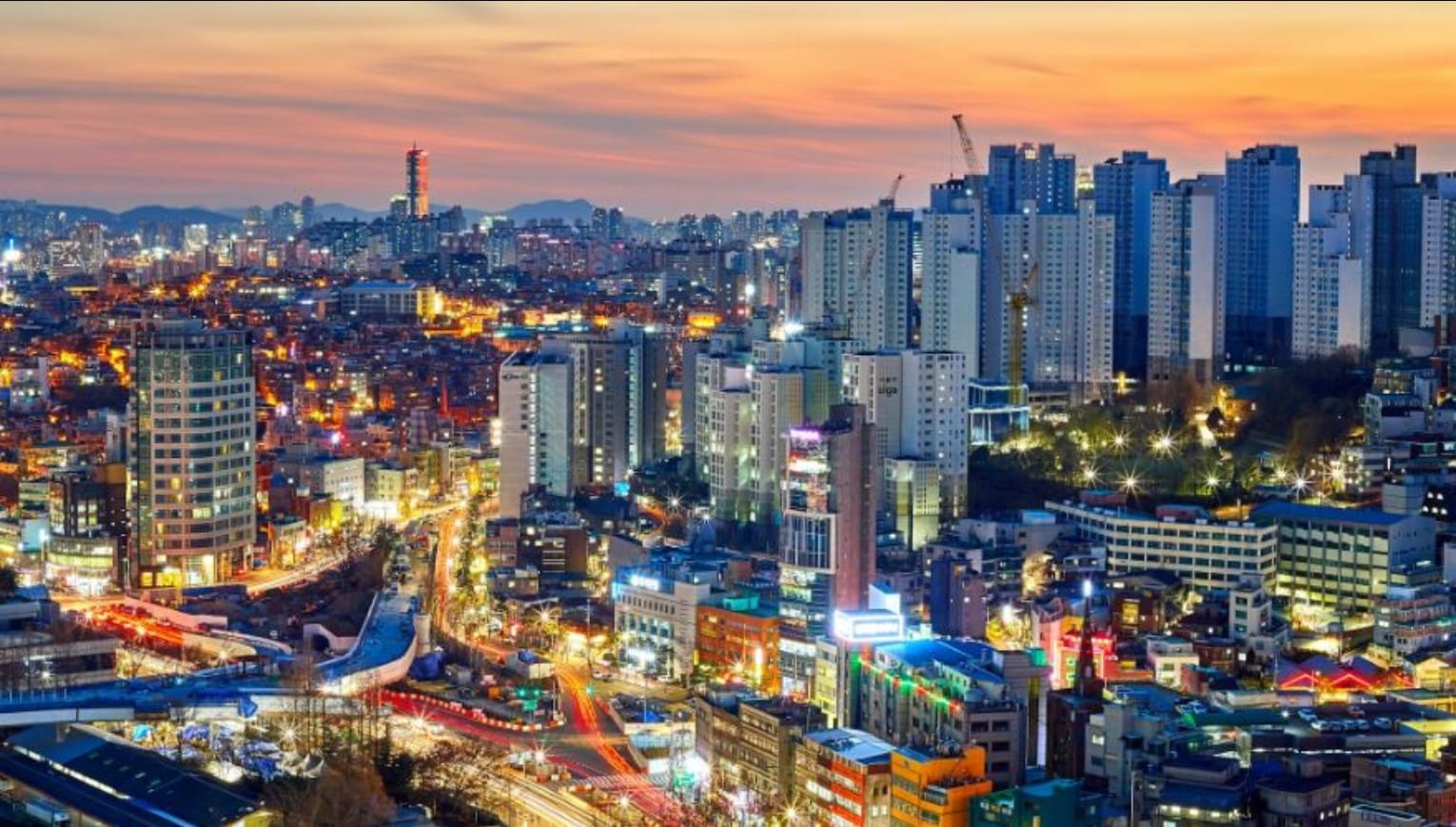
Regular readers of our blog will know I am a keen traveller. My latest adventure South Korea in March, 2024.
South Korea is quite different from any other Asian country I’ve been too - especially compared to India - which I visited late last year. Here people are reserved and quiet - in such a technologically savvy country it’s no surprise everyone on the metro and in the streets connected to their mobile phones.
Officially known as the Republic of Korea (ROK), the country is located on the southern half of the Korean peninsula, bordered by the Yellow and East seas as well as a land border with North Korea. It’s a small country ranked at 107th in the world.
Seoul is a sophisticated, vibrant and exciting city, located within Seoul province that has a population of half of the entire country’s 50 million - it’s a constant bustle - they may be quiet, but their drive to succeed is enormous.
50 years ago, South Korea was a poor country, today it packs a punch - now the 10th largest economy in the world, a top exporter of cars, car parts, petroleum, cargo and passenger ships.
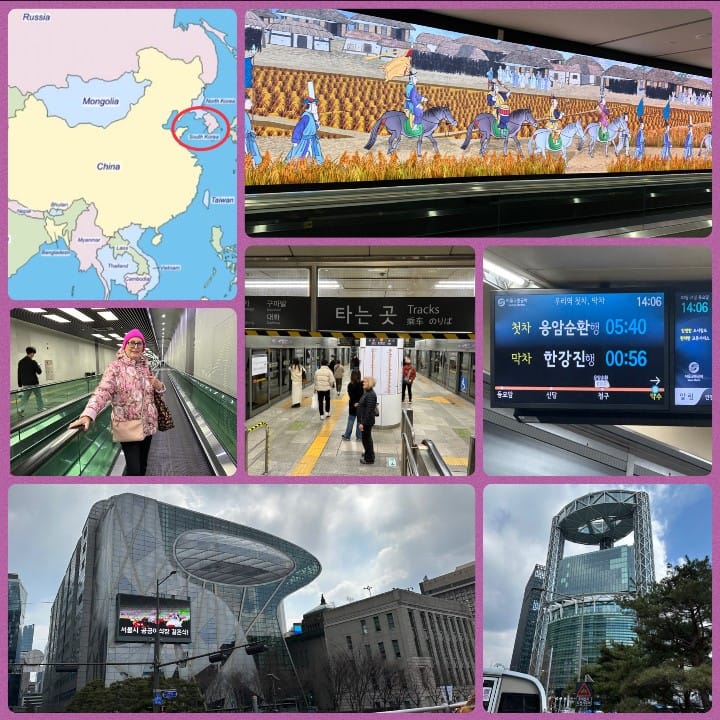
State of the art buildings, mingle with ancient temples, a mix of religions - mainly Buddhist and Catholic.
As a highly developed nation with massive global influence, the lifestyle and culture of the country is still entrenched and heavily shaped by history and tradition, which we saw during our 3 days in Seoul.
I'm in Seoul for a few days with a girlfriend before touring the country on an organised 10 day tour. We soon mastered the impressive metro - 768 stations across 23 lines - we used just 6 stations. Large stations have many exits and the whole system runs like a well oiled machine.
We started on the hop on hop off bus, circling the city to get our bearings. So much to see and it soon became apparent 3 days would hardly touch the surface of this fascinating city.
We stopped briefly at Dongdaemun Design Plaza designed by Zaha Hadid - I was blown away by the Heydar Aliyev Centre in Baku last year and another or her designs in Riyadh recently, The cultural complex here equally impressive.
Dubbed the largest 3-dimensional atypical structure in the world, this concrete and aluminium landmark also comprises galleries, a museum and lawns that rise to the roof. It reminded me of a spaceship. We only had time for a quick photo and I hope to visit again on another trip to Seoul in the future.
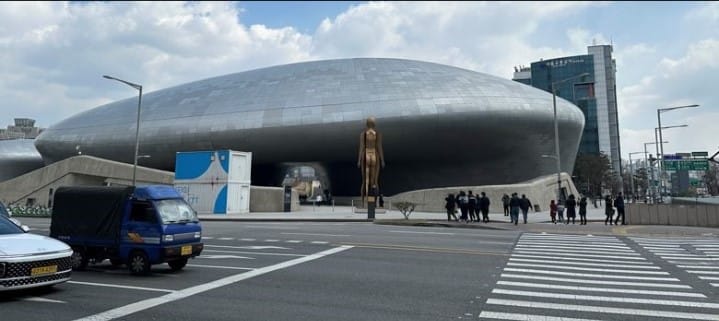
If your are interested in architecture or the work of Zaha Hadid, this 3 min video is a good overview - lots of quirky elements, no sharp angles and some unusual sculptures too.
We used the metro to visit the National Museum of Korea - a massive concrete building divided into logical spaces covering historical artifacts as well as beautiful ceramics and parchments.
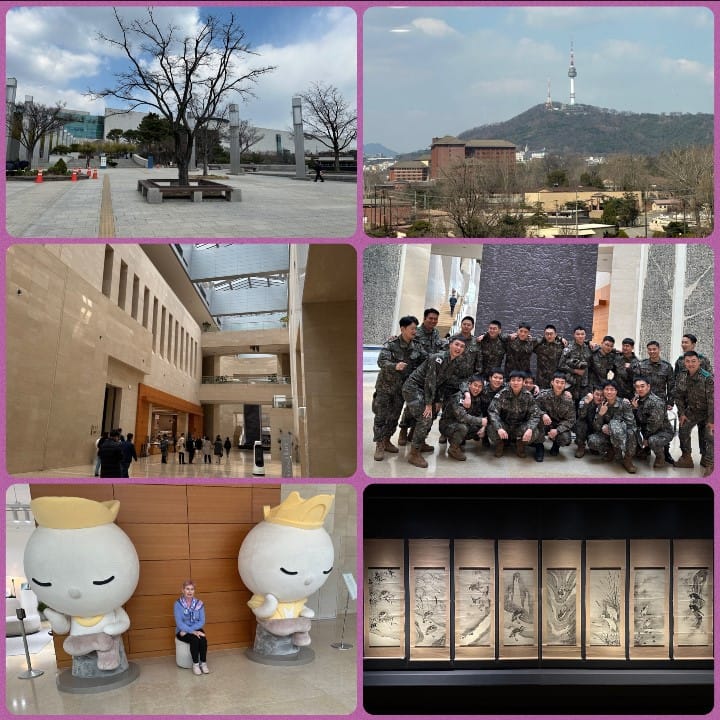
For thousands of years, the Korean peninsula was occupied by different dynasties including the Gojoseon, Joseon, and the Three Kingdoms. Japan occupied Korea after the Russo-Japanese war until the end of World War II.
Following WWII and the Korean War, two independent countries were established. Today, South Korea is a democratic nation, while North Korea is a dictatorship, a poor country with around 25 million people.
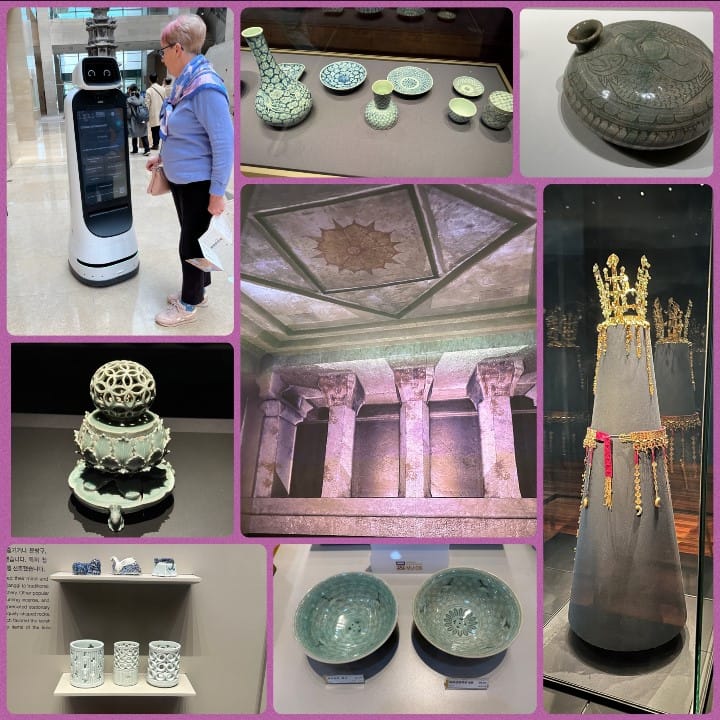
These days South Korea is perhaps best known for their popular culture. Some examples include:
- In 2020 Parasite, was the first non-English language movie to ever take the title.
- The following year K-pop band BTS, was named the top-selling act in the world, beating other well-known artists such as Adele.
- K-drama Squid Game garnered over 1.6 billion hours viewed within the first four weeks of release, making it the most-watched Netflix show of all time.
We didn’t get a chance to explore this side or South Korea, another reason to return!
Korean culture is still heavily influenced by the Joseon dynasty, which spanned 500 years. Confucian tradition continues to shape personal and professional lives with a strong emphasis on honour, dignity, and family.
For our 2nd day we visited the World Heritage listed Changdeokgung Palace, said to be the most beautiful of Seoul’s 4 main palaces, built in the early 15th century as a secondary palace to Gyeonbokgung.
Both palaces were destroyed by the Japanese in the 1590s. Changdeokgung was rebuilt and became the primary royal residence until 1872, remaining in use until the early 20th century.
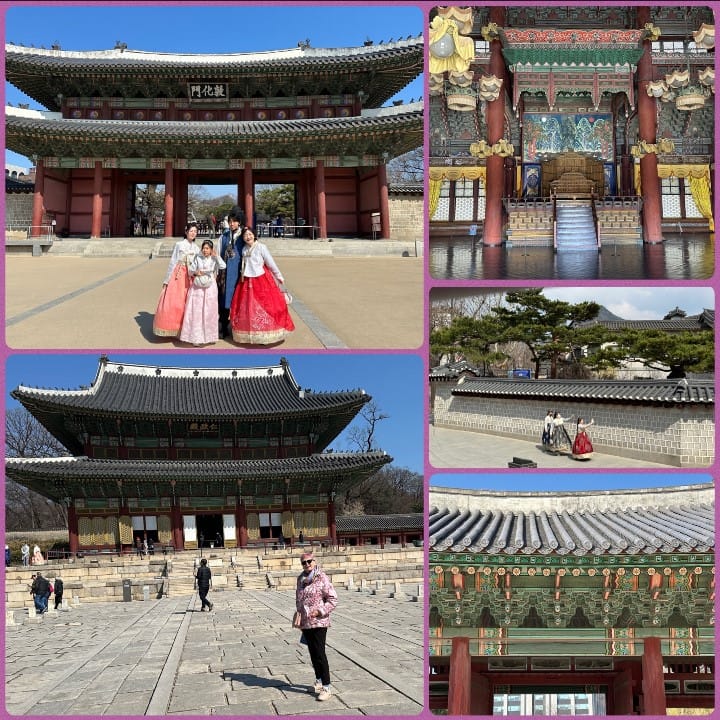
We continued to The Huwon (Secret Garden) reserved for royal families who used the garden: to fish in quiet contemplation by serene ponds, write poetry in the small pavilions or study texts in the 2-storey library.
It’s been a long cold winter in Seoul - trees and shrubs continue to slumber, however we saw a few glimpses of spring blossoms, which will be magnificent in a month’s time.
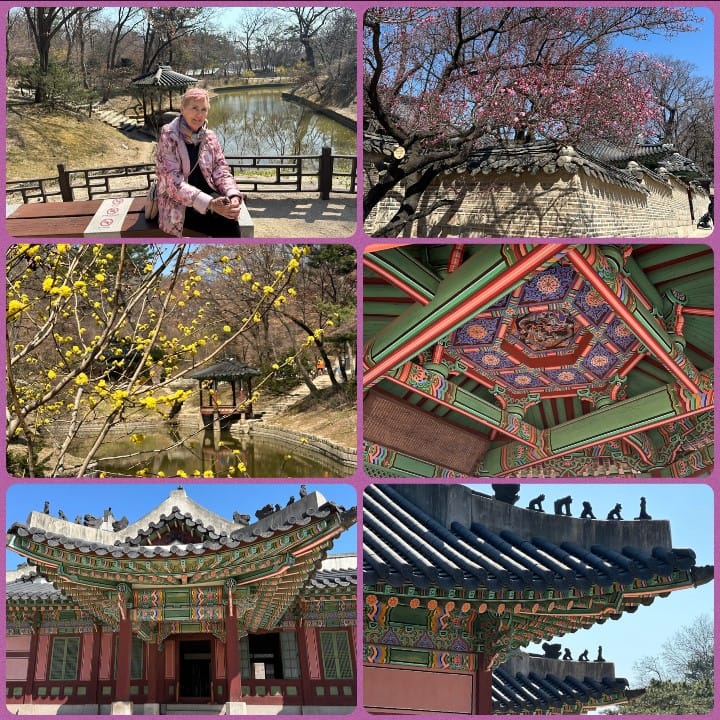
Join me tomorrow to explore more of Seoul.
